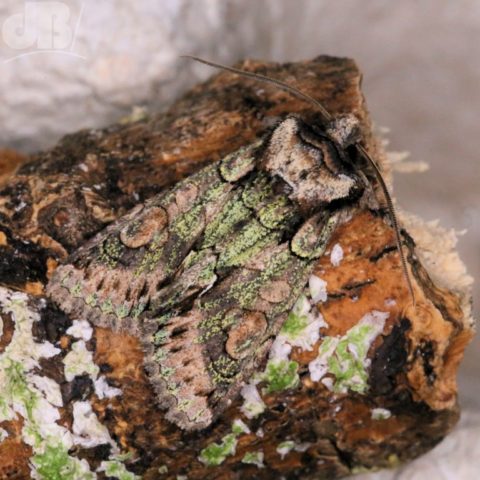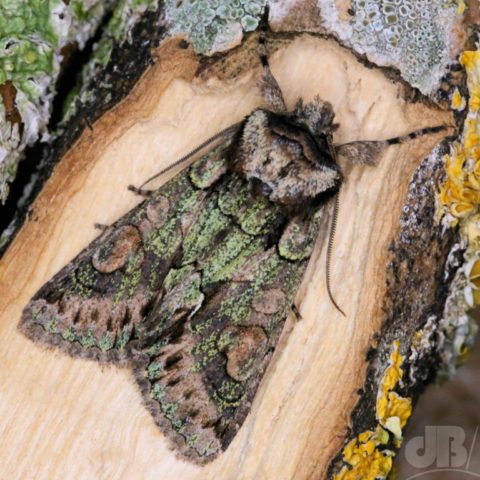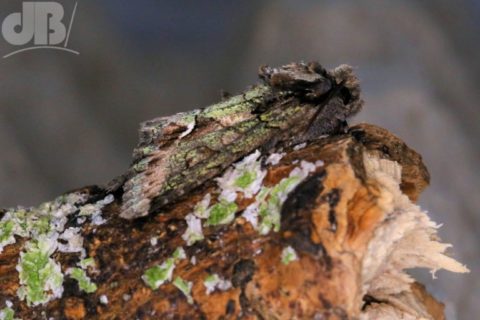Isn’t it time to put the scientific moth trap away, they asked. Surely there are no moths flying in the autumn and winter. Well, there are definitely fewer species around now, especially if it has been really damp and chilly overnight. But, there were numerous last night feeding on the ivy blossom: Centre-barred Sallow, Large Yellow Underwing, Vine’s Rustic, Common Plume, and one or two micro moths.

In or around the trap, more Yellow Underwings (Lesser, Small, and Large), Setaceous Hebrew Character, White Point, Lunar Underwings, and a Red-green Carpet.

This morning some of those were still in attendance, but a Green-brindled Crescent (Allophyes oxyacanthae) had taken over the morning shift from the RG Carpet. This species was first curated by Linnaeus in 1758, it grows to between 35 and 45 mm according to the UKMoths page. It’s prominently green in colour, but subtly striped (the brindled part of its name). The crescent in its name refers to two white curves on its wings. It has unusually large oval and kidney marks compared with many other noctuid (owlet) moths.

It is mottled brown mainly but catch it in the right light or under the glare of a camera ring flash and its gree metallic scales will shine through. It commonly flies from September to November and is found across the UK, in woodland, hedgerows, and the suburbs, its caterpillars feeding on hawthorn (Crataegus) and blackthorn (Prunus spinosa) and other trees and bushes.